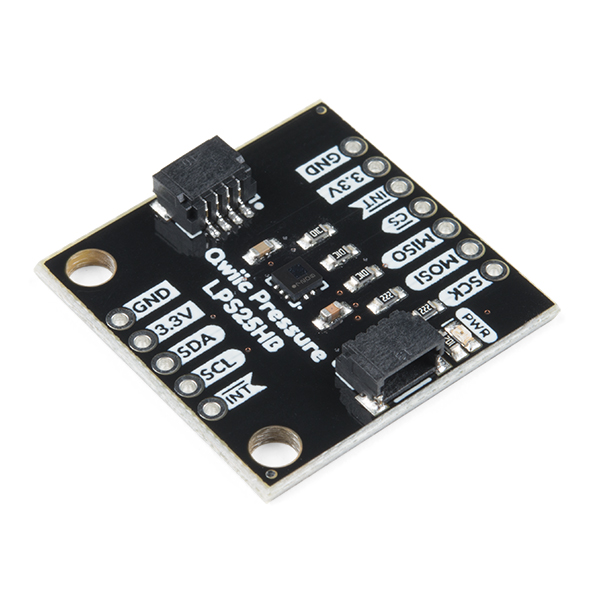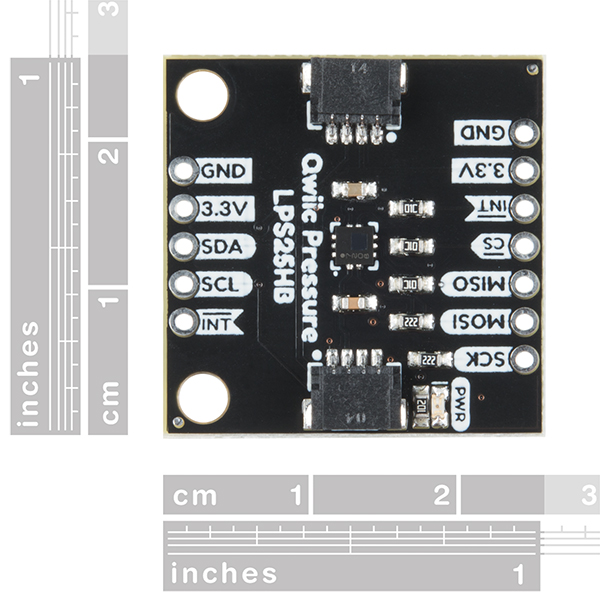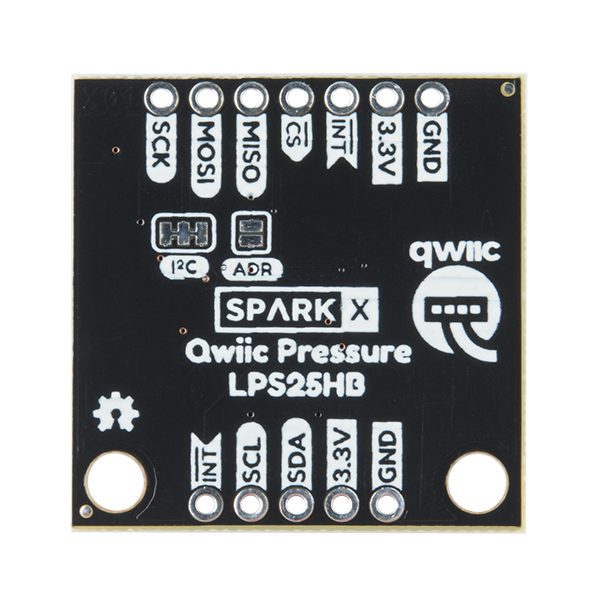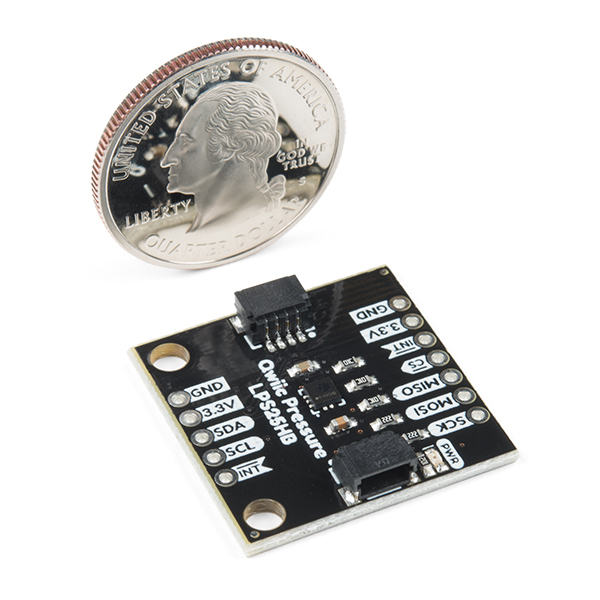Qwiic Pressure Sensor - LPS25HB
The LPS25HB is an absolute pressure sensor which means that it has an internal vacuum as a reference. (As opposed to differential and gage sensors, see this description by Honeywell for more info) Absolute pressure sensors are often used as altimeters however they can be seen in other applications like the Robotic Finger Sensor v2.
You can use this absolute pressure sensor to inform a drone autopilot of altitude, make a personal weather station, or maybe even help test someone's lung function! As part of the Qwiic system adding more capabilities like data logging with the Qwiic OpenLog is a cinch!
The LPS25HB is the newest version of the LPS25H by STMicroelectronics featuring the widest range of sensing pressures (26 kPa to 126 kPa) and very high precision (as low as 1 Pa RMS, which equates to approximately 8 centimeters of air at sea level). Other features such as the 25 Hz update rate and durability to withstand nearly 2.5 MPa over-pressure make this a great choice for absolute pressure sensor. Additionally the LPS25HB comes in a stylish plastic IC package, as opposed to the standard metal casing seen on most other pressure sensors.
In addition to the Qwiic connectors this sensor breakout exposes the I2C and SPI lines as plated through hole (PTH) connections on either side. SPI access will allow for even faster communication with the sensor (up to 10 MHz!)
The LPS25HB Qwiic Pressure Sensor can also be automatically detected, scanned, configured, and logged using the OpenLog Artemis datalogger system. No programming, soldering, or setup required!
We do not plan to regularly produce SparkX products so get them while they’re hot!
Note: The I2C address of the LPS25HB is 0x5D and is jumper selectable to 0x5C. A multiplexer/Mux is required to communicate to multiple LPS25HB sensors on a single bus. If you need to use more than one LPS25HB sensor consider using the Qwiic Mux Breakout.
Experimental Product: SparkX products are rapidly produced to bring you the most cutting edge technology as it becomes available. These products are tested but come with no guarantees. Live technical support is not available for SparkX products. Head on over to our forum for support or to ask a question.
- 260 to 1260 hPa absolute pressure range
- High-resolution mode: 0.01 hPa RMS at 24 bits
- Safe at up to 20x maximum measurement pressure
- Internal 16 bit temperature sensor
- Output rates 1, 7, 12.5, and 25 Hz
- 3.3V operation
- 4 uA current consumption in low-resolution mode (remove power LED first!)
- Datasheet
- Schematic
- Eagle Files
- Arduino Library
- To get the latest files please visit the GitHub repo
Comments
Looking for answers to technical questions?
We welcome your comments and suggestions below. However, if you are looking for solutions to technical questions please see our Technical Assistance page.
Customer Reviews
3 out of 5
Based on 1 ratings:
1 of 1 found this helpful:
Needs very clean voltage
See my experience on the Sparkfun Forum. I had many strange issues when powered directly from a Raspberry Pi 3.3V pin.
https://forum.sparkfun.com/viewtopic.php?f=14&t=48369





